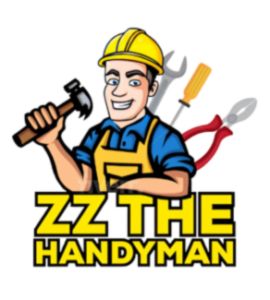How Small Companies Can Raise Money by Filing a Reg D and Finding Accredited Investors.
ZZ is considering raising capital to expand its footprint to purchase minivans, equipment & train staff, etc. In the competitive landscape of modern business, small companies often face the challenge of securing the necessary capital to fuel growth and innovation. Traditional funding methods, such as bank loans, may not always be accessible or adequate. For these businesses, Regulation D (Reg D) of the Securities Act of 1933 provides a valuable pathway for raising capital through private placement offerings. This blog post will delve into how small companies can raise money by filing a Reg D and finding accredited investors, providing a comprehensive guide to understanding and leveraging this powerful financing tool. Understanding Regulation D Regulation D is a set of rules established by the Securities and Exchange Commission (SEC) that allows companies to offer and sell securities without having to register with the SEC. This regulation is particularly advantageous for small businesses as it simplifies the process of raising capital and reduces associated costs and complexities. Key Provisions of Regulation D Rule 504: This rule allows companies to raise up to $10 million within a 12-month period. It is primarily used by small businesses and startups. Rule 506(b): This rule permits raising an unlimited amount of money and allows up to 35 non-accredited investors, provided they meet certain sophistication requirements. General solicitation is not allowed under this rule. Rule 506(c): This rule also allows for raising an unlimited amount of capital but requires all investors to be accredited. Unlike Rule 506(b), general solicitation and advertising are permitted under this rule. Steps to Filing a Regulation D Offering To successfully raise money through a Reg D offering, companies need to follow a series of structured steps. 1. Preparing the Offering Before filing with the SEC, companies must prepare detailed offering documents, including a Private Placement Memorandum (PPM). The PPM should outline the business plan, the terms of the offering, and potential risks involved. This document is crucial for providing transparency and building trust with potential investors. 2. Filing Form D Once the offering documents are prepared, the next step is to file Form D with the SEC. This form includes information about the company, the offering, and the principals involved. Filing Form D is a straightforward process that can be completed online through the SEC’s EDGAR system. 3. Compliance with State Laws In addition to federal regulations, companies must comply with state securities laws, often referred to as “Blue Sky” laws. This typically involves filing notice documents and paying fees in each state where the securities will be offered or sold. 4. Engaging Legal and Financial Advisors Given the complexities involved in securities offerings, it is highly recommended to engage experienced legal and financial advisors. They can help ensure compliance with all regulations, prepare necessary documentation, and guide the company through the entire process. Finding Accredited Investors Accredited investors are individuals or entities that meet certain financial criteria set by the SEC, making them eligible to invest in private placements. These criteria include having a net worth of at least $1 million (excluding primary residence) or an annual income of $200,000 ($300,000 for married couples) in the last two years with the expectation of earning the same amount in the current year. 1. Identifying Target Investors The first step in finding accredited investors is identifying who they are and where to find them. Accredited investors often include high-net-worth individuals, venture capitalists, angel investors, and institutional investors. Networking within industry circles, attending investor conferences, and utilizing online platforms can be effective strategies for identifying potential investors. 2. Leveraging Online Platforms Several online platforms connect companies with accredited investors. Platforms like AngelList, Fundable, and SeedInvest offer a marketplace where startups and small businesses can present their investment opportunities to a large pool of accredited investors. 3. Building Relationships Raising capital from accredited investors is not just about making a pitch; it’s about building relationships. Establishing trust and credibility is crucial. This can be achieved through regular communication, transparency about business operations and finances, and demonstrating a clear path to growth and profitability. 4. Utilizing General Solicitation (Rule 506(c) For companies choosing to raise capital under Rule 506(c), general solicitation and advertising are allowed. This means companies can publicly advertise their offerings through various channels, including social media, press releases, and webinars. However, they must take reasonable steps to verify that all investors are accredited, which involves reviewing financial documents and obtaining written confirmations from financial institutions or advisors. Advantages and Challenges of Reg D Offerings Advantages Lower Costs and Reduced Time: Compared to a public offering, a Reg D offering is significantly less expensive and time-consuming, allowing small businesses to raise capital more efficiently. Flexibility: Reg D provides flexibility in terms of the amount of capital that can be raised and the types of investors that can participate. Privacy: Since Reg D offerings are private placements, companies can maintain more confidentiality regarding their financials and business strategies compared to a public offering. Challenges Accreditation Verification: Ensuring that all investors are accredited, especially under Rule 506(c), can be cumbersome and may require third-party verification services. Regulatory Compliance: Navigating federal and state regulations requires careful attention and often legal assistance to ensure full compliance. Investor Relations: Managing relationships with a larger number of investors can be challenging, particularly for small companies with limited resources. Case Studies of Successful Reg D Offerings Example 1: Tech Startup A tech startup developing an innovative AI-driven platform chose to raise capital through a Rule 506(c) offering. By leveraging online investment platforms and social media campaigns, the company was able to reach a broad audience of accredited investors. They raised $5 million within six months, which enabled them to scale their operations and achieve significant milestones in product development. Example 2: Real Estate Firm A real estate firm looking to finance a new commercial property development opted for a Rule 506(b) offering. They targeted a select group of high-net-worth individuals and family offices with whom they had established relationships. The firm
How Small Companies Can Raise Money by Filing a Reg D and Finding Accredited Investors. Read More »



